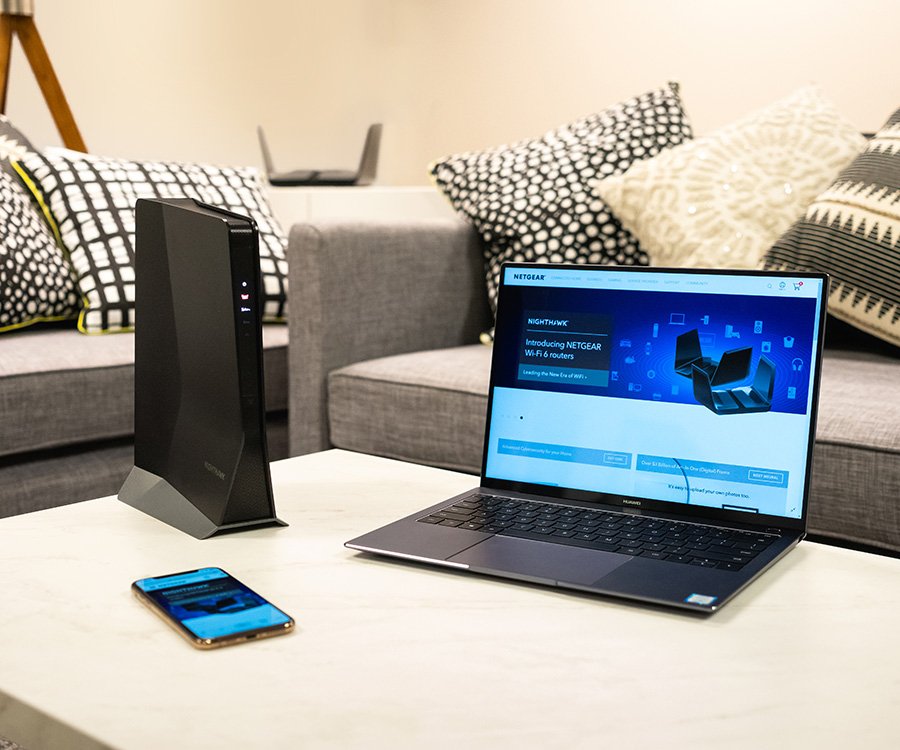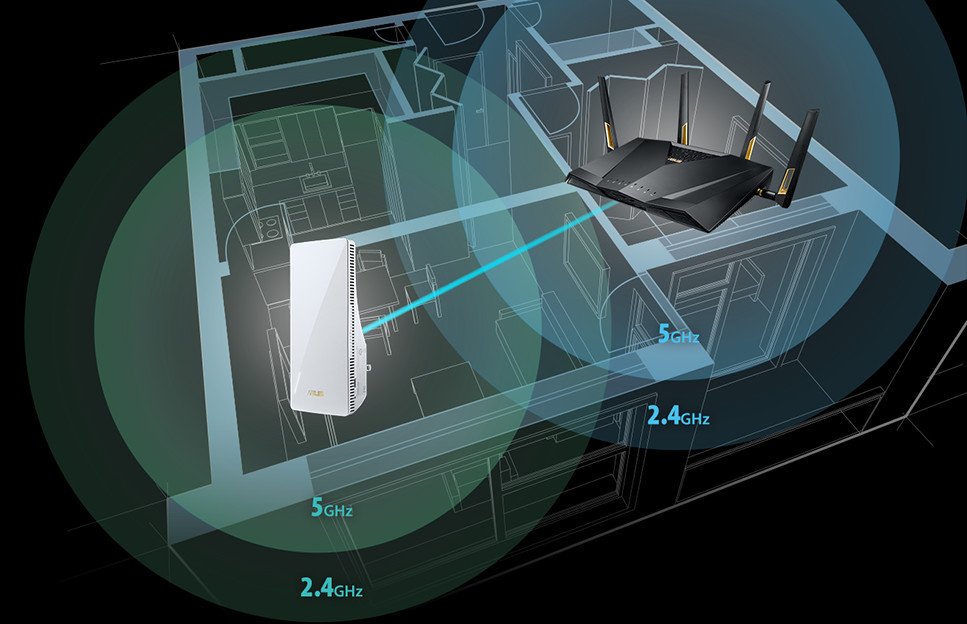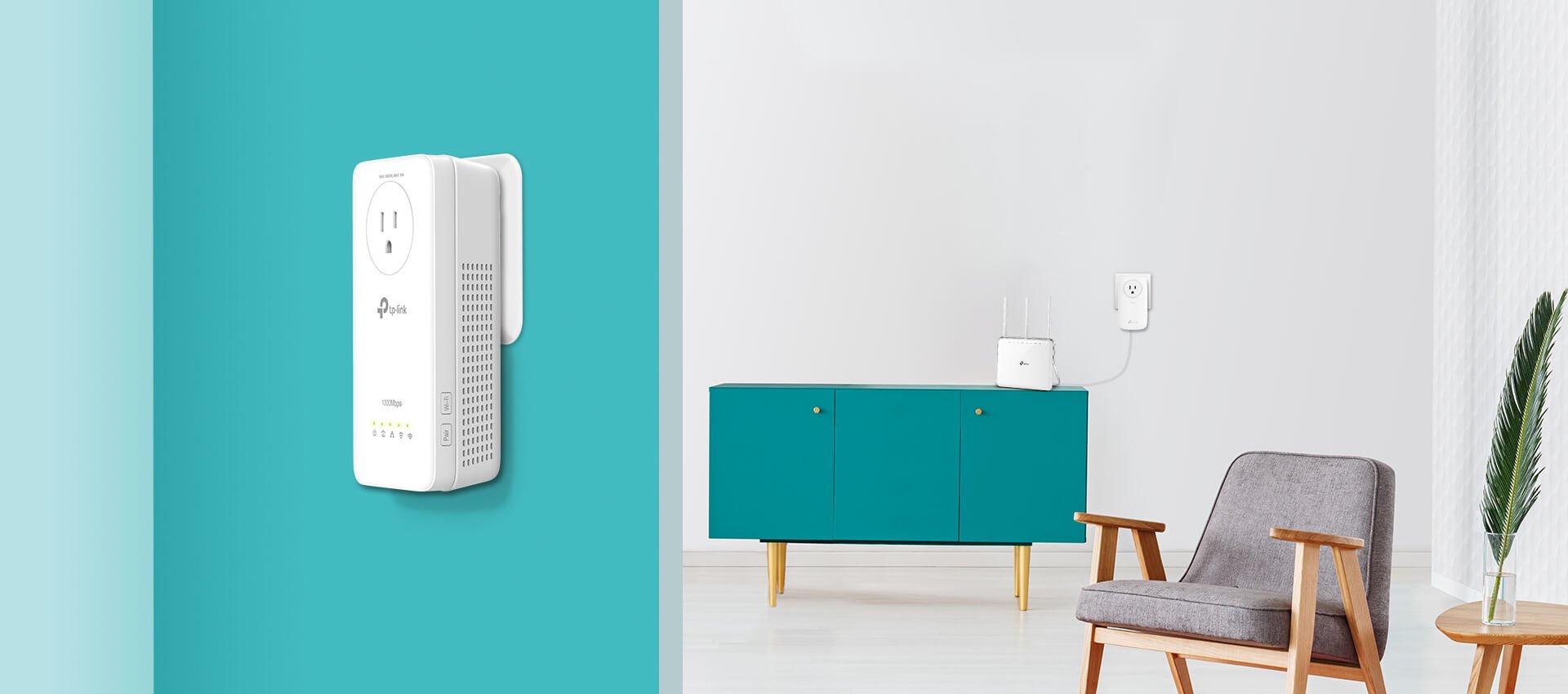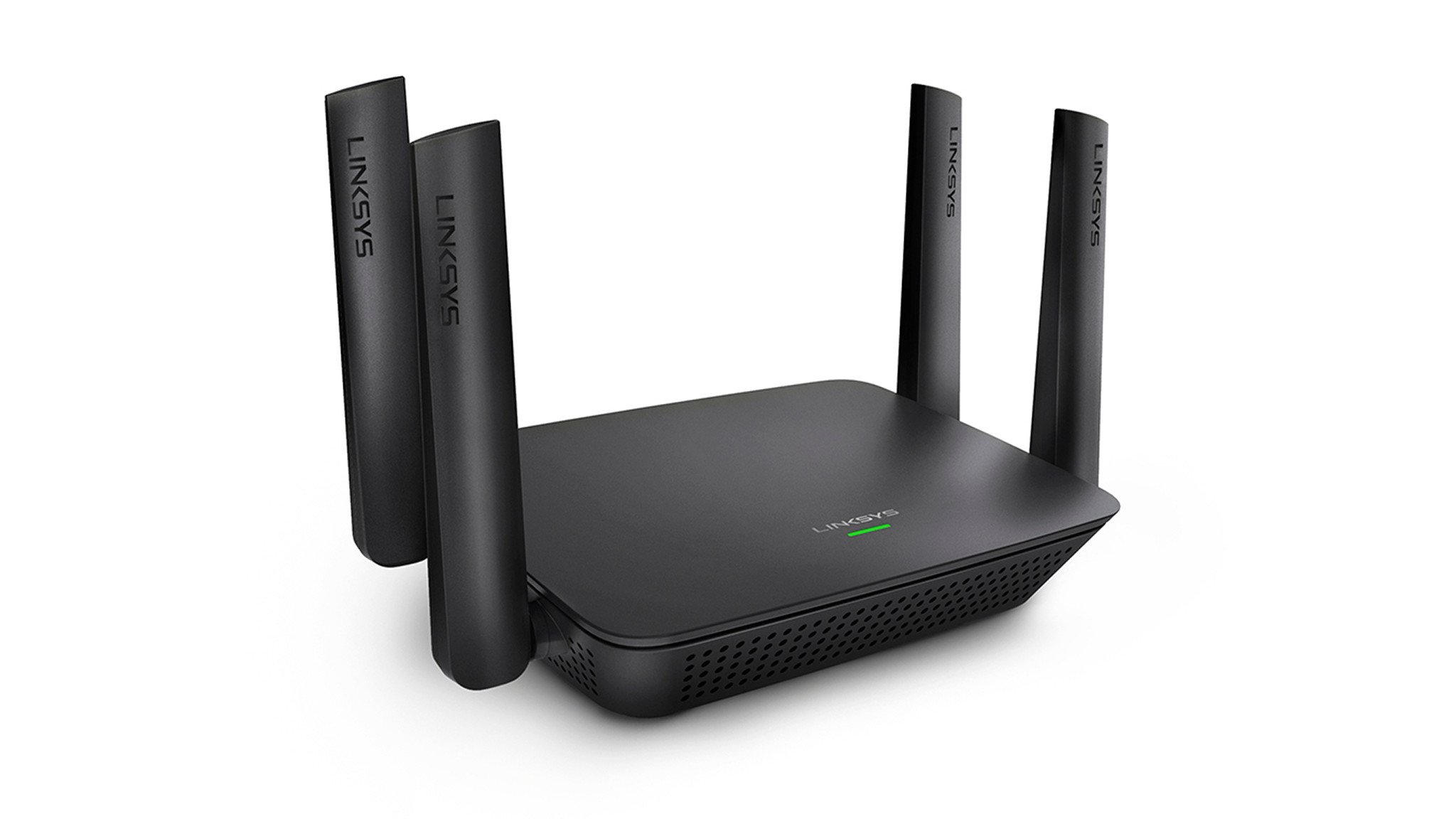Add Wi-Fi coverage without replacing your router with these extenders
If you're dealing with frustrating Wi-Fi dead zones, and upgrading your router isn't an option, the best Wi-Fi extenders should solve the issue. A range extender is a Wi-Fi booster adding more Wi-Fi coverage to your existing network without running an Ethernet line. It can also act as a middleman for devices with reduced Wi-Fi range. The TP-Link RE500X is the best overall range extender thanks to Wi-Fi 6 speeds, OneMesh compatibility, and a compact design. Still, we've laid out different extender types to fit every scenario.
Best overall: TP-Link RE500XThe TP-Link RE500X is a compact Wi-Fi extender with a simple design that makes it easy to plug in and forget about. It supports Wi-Fi 6 for those that have already upgraded to the newer tech and still works with 802.11ac devices. This extender has a maximum throughput of 300Mbps at 2.4GHz and 1200Mbps at 5GHz.
Keep in mind that the extender must share this wireless connection with devices and the router backhaul, so even though the RE500X has an AX1800 wireless connection, you won't even see that full speed result in a speed test. Still, for the most part, connections on this extender should have more than enough speed for 4K streaming, video conferencing, and browsing. Just be sure to put it in place within the range of your router.
On the side, there is an Ethernet port you can use for wired devices and a source to use RE505X as an access point. That means if you have your home wired with Ethernet, you can use this extender as a Wi-Fi booster without thinking about the signal to the main router. Finally, if you have a TP-Link router with OneMesh, you can keep your single Wi-Fi name with faster switching for devices between the router and extender.
Pros:- Wi-Fi 6 compatibility
- Fast Mode has a dedicated backhaul
- Ethernet port for wired devices
- No tri-band Wi-Fi
A great value with Wi-Fi 6
The TP-Link RE500X is a compact AX1500 Wi-Fi 6 range extender that can even mesh with other TP-Link routers.
Best value: TP-Link RE220If you're looking to add some stability to your Wi-Fi without needing a ton of speed, the TP-Link RE220 is an excellent option with 802.11ac, Wi-Fi 5, wireless with speeds up to AC750. The speed breaks down into 433Mbps at 5GHz and 300Mbps at 2.4GHz. This extender can also operate in TP-Link's High-Speed Mode, which dedicates one of the bands to connect to your router with the other reserved for your Wi-Fi devices.
With a compact size and no external antennas, this Wi-Fi extender aims to fill in an area with a spotty signal rather than covering a significant portion of your home. With an Ethernet port on the bottom, this is a great way to get a wired device connected like a desktop computer while avoiding adding antennas to the back of your PC or desk.
Pros:- Compact design
- Inexpensive
- High-Speed Mode improves performance
- No mesh features
- Relatively low speeds won't be ideal for HD streaming
Compact Wi-Fi for a great price
Fill in dead zones and add an Ethernet port to a room with the TP-Link RE220. With AC750 Wi-Fi, it has the speed for most browsing.
Best Wi-Fi 6 upgrade: Netgear Nighthawk EAX80If you're looking for a fast Wi-Fi 6 extender that can keep up with your fast Wi-Fi 6 router, the Netgear Nighthawk EAX80 is an excellent option with AX6000 speeds. With 8 Wi-Fi streams and a dual-band connection, this router has a throughput of 1.2Gbps at 2.4GHz and 4.8Gbps at 5GHz, thanks to a 160MHz band. With so much speed and power, the Nighthawk may be your primary source for Wi-Fi rather than a simple Wi-Fi booster. Four gigabit Ethernet ports on the back also let you connect many wired devices with Wi-Fi 6 speeds.
This extender has a desktop design nearly the size of a standard router making this a good choice for an entertainment center or home office but overkill for standard web browsing and most streaming at 1080p or lower. However, if you already have a compatible Netgear Nighthawk router with Nighthawk Mesh, you can use this extender with a single Wi-Fi name and easier configuration. It's the best Wi-Fi extender for someone who pays for top internet speeds but doesn't get consistent performance when far away from the router.
Pros:- Super-fast AX6000 speeds
- 4 Ethernet ports
- Single Wi-Fi name
- Nighthawk Mesh support
- Expensive
- Large size will be hard to blend in
- $240 at Amazon
- $250 at Best Buy
- $250 at DellTons of speed and Wi-Fi 6 connectivity
The Nighthawk EAX80 has plenty of speed for anything with enough Ethernet ports to connect four wired devices.
Best mesh compatible: Asus RP-AX56The Asus RP-AX56 is like many other compact Wi-Fi 6 range extenders with an AX1800 dual-band connection, but it has powerful software features. The connection breaks down to 574Mbps at 2.4GHz and 1200Mbps at 5GHz. This extender will work with any other router, including older Wi-Fi 5 routers, but it really shines with a Wi-Fi 6 Asus router.
The RP-AX56 is a great partner for some of the best Wi-Fi 6 routers, but if you use it with an Asus router, you get the benefits of AiMesh. AiMesh allows you to use this extender as a mesh node for an Asus Wi-Fi router, including ZenWiFi mesh systems. So even if you're using it with another brand, it can be easily set up and managed with the Asus router app.
If you have an Asus router, this is one of the best options to add some coverage without manually configuring new wireless settings on any of your devices. Instead, they will connect to the strongest signal available.
Pros:- Works with AiMesh
- Easy app setup
- Compact size
- Wi-Fi 6 AX1800
- Only one Ethernet port
- Blocks the other outlet
Compact expansion with AiMesh built-in
The Asus RP-AC1900 is a solid desktop-style range extender with wired ports that work with any router but works best with AiMesh.
Best powerline Wi-Fi extender: TP-Link AV1300 powerline extender (TL-WPA8631P)The TP-Link AV1300 powerline extender is a great fit for those that need Wi-Fi coverage beyond a signal-killing obstacle like a concrete wall. The sender will be positioned near your router and connected via Ethernet. The receiver will take that signal and turn it into an AC1200 connection. That's 300Mbps at 2.4GHz and 867Mbps at 5GHz. While the whole thing depends on the connection speed over the power lines in your home, the maximum transmission speed of 1300Mbps means you'll more than likely have plenty of speed for just about anything short of gaming.
Gaming on a powerline connection is not a great idea due to the amount of interference on power lines. While you'll have enough speed and a low enough ping to get started, monetary spikes can hurt the experience in a competitive game. The power line transmission speed is also dependent on the quality of your wiring and the amount of electrical interference from things with AC motors like air conditioning systems.
This model is also compatible with TP-Link's OneMesh software. So you can use it with a OneMesh compatible router like the Archer AX21 for seamless roaming between the extender and your primary router.
Pros:- Reach specific rooms without Wi-Fi signal
- Hits up to 1300Mbps per adapter
- Can incorporate multiple adapters throughout the home
- Fast pairing and OneMesh support
- Powerline speeds can be inconsistent
- Adapter can block off top outlet
Send your connection over your existing wires
This powerline adapter with a Wi-Fi extender is a great way to connect when there isn't enough Wi-Fi signal to extend.
Best coverage: Linksys RE9000Thanks to its desktop design and four antennas sticking out of each corner, the Linksys RE9000 looks more like a traditional Wi-Fi router than an extender. This bulky design has the specs to back it up with a tri-band Wi-Fi connection maxing out at AC3000. This speed is broken down to 400Mbps at 2.4GHz, 866Mbps on one 5GHz band, and 1733Mbps on the other 5GHz bands. One of these 5GHz bands is always connected to the base router allowing for a consistent and stable connection.
This extender also has support for MU-MIMO, which allows it to handle many wireless devices without delay, and four gigabit Ethernet ports allow you to connect your home office or entertainment center with ease. Moreover, these connections are kept fast since the RE9000 has one band dedicated to transmitting data to and from the router.
Pros:- Tri-Band Wi-Fi with a dedicated backhaul
- Fast AC3000 speeds
- Four gigabit Ethernet ports
- Up to 10,000 sq ft of coverage
- Large size with four antennas
Tons of extra coverage at AC3000 speeds
With 4 gigabit Ethernet ports, AC3000 speeds, and Tri-Band Wi-Fi, the Linksys RE9000 can provide coverage to your network.
Bottom lineSome homeowners don't want to upgrade the free router given by their internet provider; others did upgrade their router but still get frustrated by its performance the further you move from it. Regardless, the best Wi-Fi extenders assist your router by boosting its coverage and capacity, whether you need something fast, a ton of coverage, or just enough for browsing the web. If possible, pick an extender that will work with some mesh capability in your routers, such as Asus' AiMesh or TP-Link's OneMesh.
It's also a good idea to get an extender that's fast enough for your devices, and at this point, you should be buying an extender that at least supports 802.11ac. Wi-Fi 6 is an excellent option for many people since many new devices are coming equipped with Wi-Fi 6 capabilities, and if you're planning to upgrade your router, you should go with one of the best Wi-Fi 6 routers around. Overall, the TP-Link RE500X is the best option for most people, thanks to its fast speed and support for the newest wireless tech.
If an extender improves your signal but not your speed, consider starting fresh with a mesh system. Our router vs. mesh networking guide guide breaks down which users will benefit most from upgrading your entire system.
Credits - The team that worked on this guide![]()
Samuel Contreras When Samuel is not writing about networking and carriers, he spends most of his time researching computer components and obsessing over what CPU goes into the ultimate Windows 98 computer. It's the Pentium 3.












